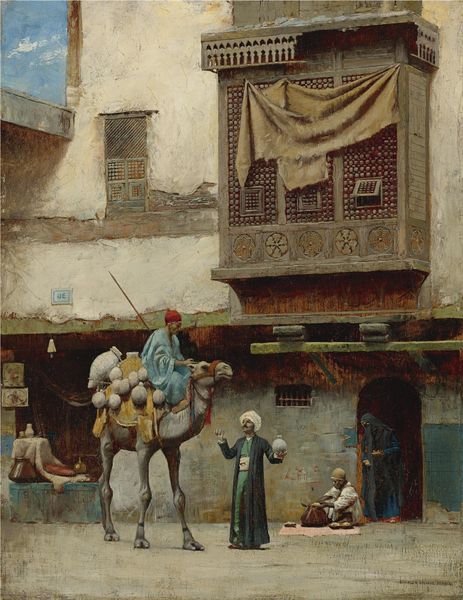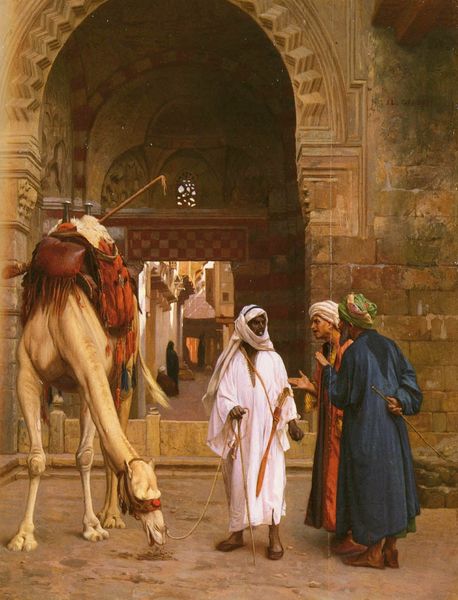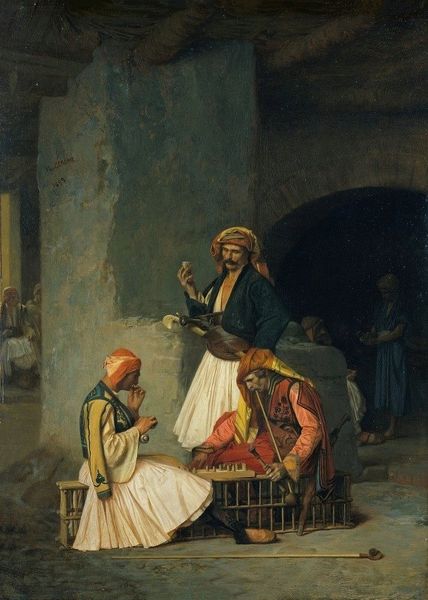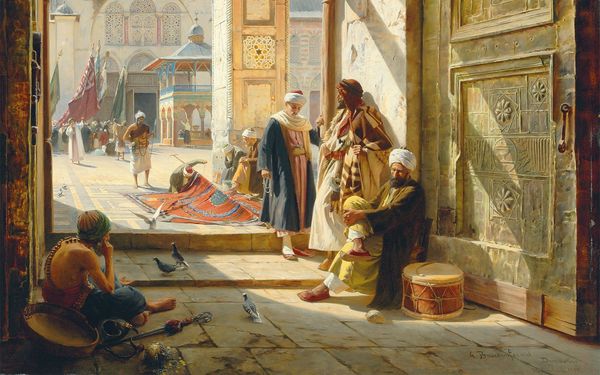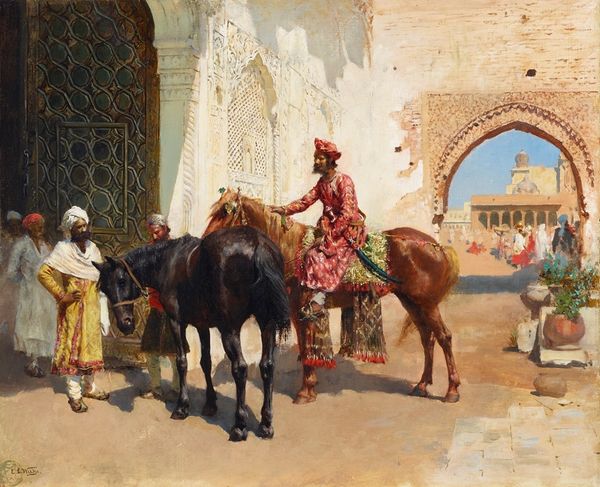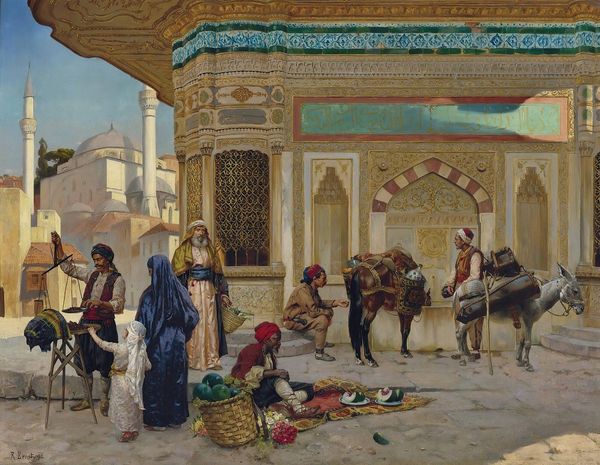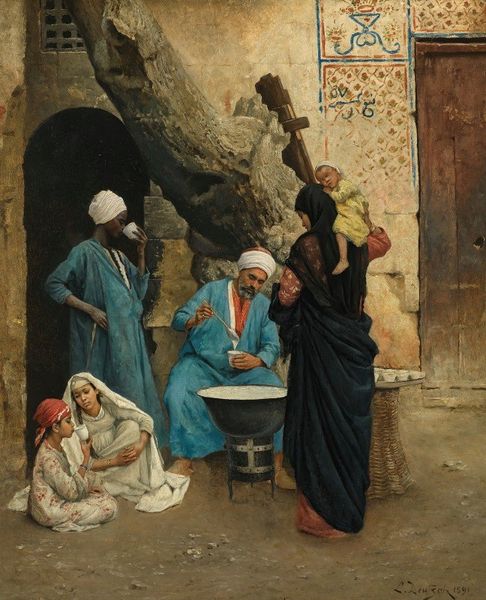
#
figurative
#
possibly oil pastel
#
oil painting
#
derelict
#
coloured pencil
#
underpainting
#
painting painterly
#
watercolour bleed
#
watercolour illustration
#
watercolor
#
warm toned green
Copyright: Public Domain: Artvee
Editor: Frederick Arthur Bridgman's "Femmes arabes devant une porte," painted in 1878, depicts a street scene with Arab women. The detail is striking; it almost feels like a snapshot in time. What strikes me most is how enclosed the women appear to be, even within a public space. What do you see in this piece? Curator: Bridgman’s work provides a window into Orientalist perspectives prevalent in 19th-century European art. It’s crucial to analyze this image critically, not just for its aesthetic qualities, but for how it participates in the construction of the "Orient" as an exoticized other. The women are veiled, posed – how does this contribute to a narrative imposed by a Western male artist onto their lived reality? How does the Western gaze affect the women portrayed in the image? Editor: That’s a powerful point. I hadn't considered how the artist's perspective shapes the whole narrative. Do you think his intentions might have been different? Curator: Intention is less significant than impact. Even if Bridgman aimed to document, his vision was inevitably filtered through a lens of power. Think about the Western fascination with harems and the veiling of women. It created stereotypes of the East as mysterious, sensual, and oppressed, often justifying colonial interventions. Does knowing this change how you view the piece? Editor: Absolutely. It makes me question the authenticity of what’s being presented. It's almost like these women were props within a larger, colonial narrative. I realize now how crucial it is to understand the historical context when viewing art. Curator: Precisely. And to consider whose voices are absent and whose perspectives dominate. The art can become a site of critical inquiry into power, representation, and the ongoing legacies of colonialism.
Comments
No comments
Be the first to comment and join the conversation on the ultimate creative platform.
